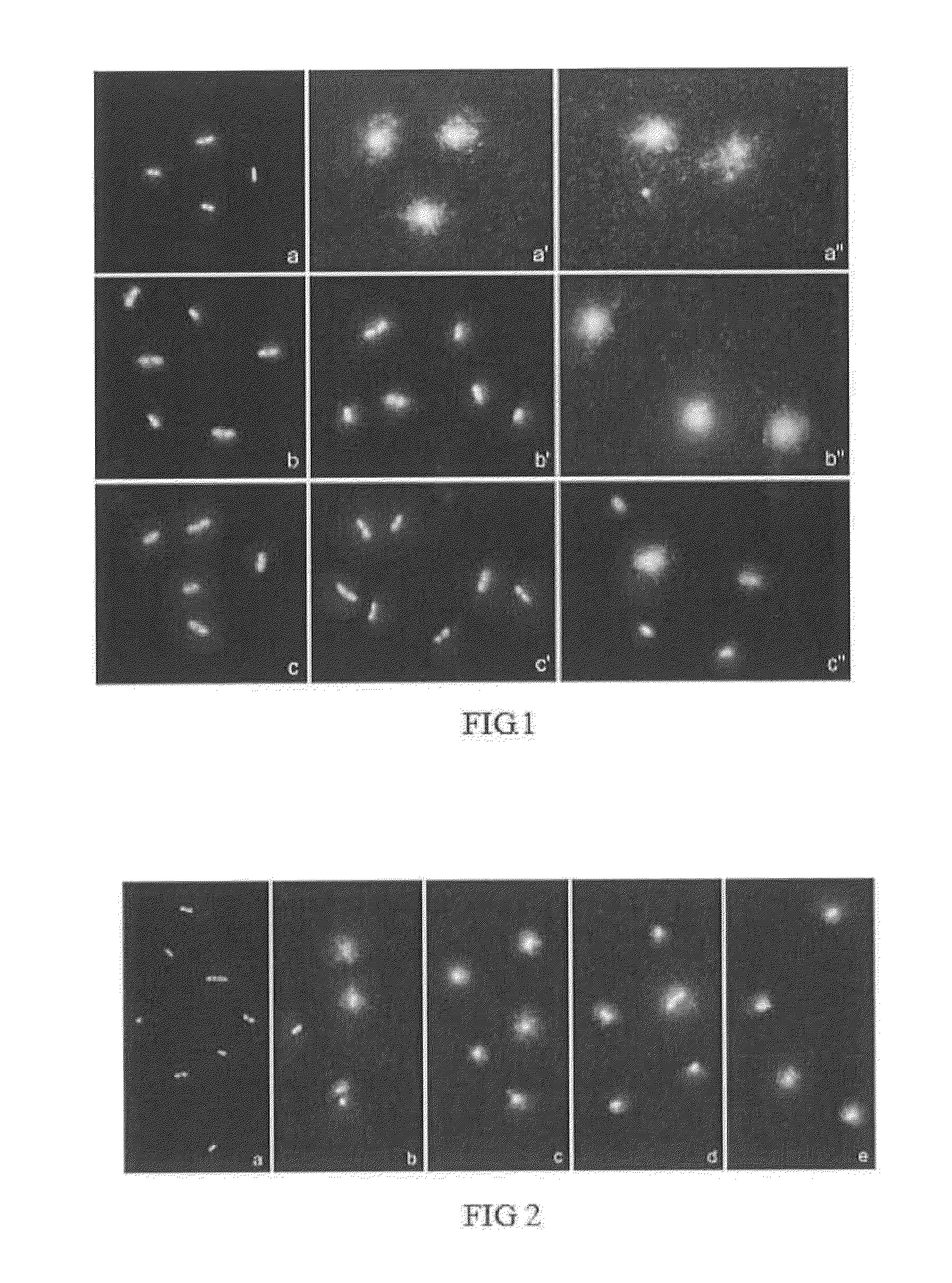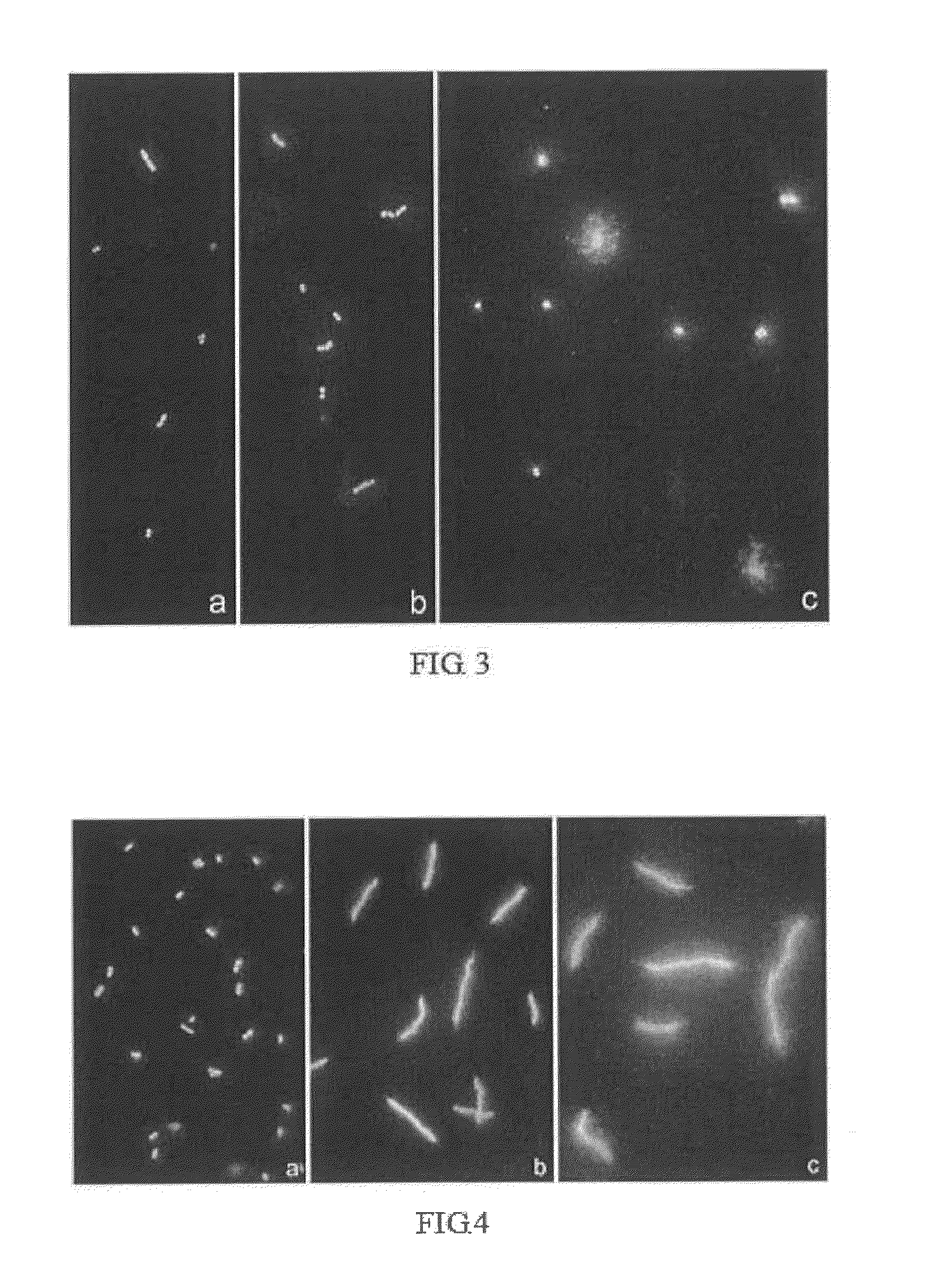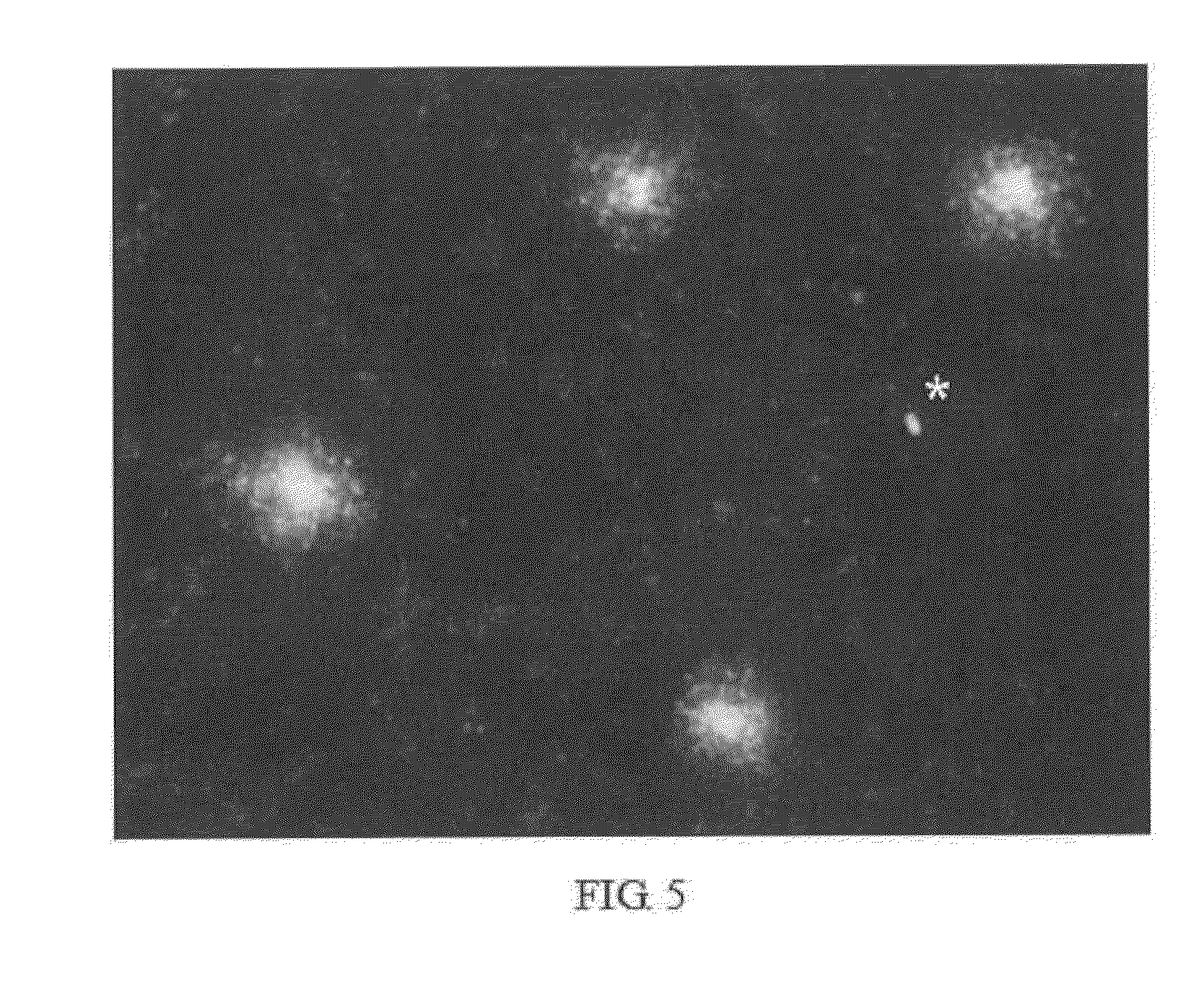Method for evaluating bacterial cell wall integrity
a cell wall integrity and bacterial technology, applied in the biochemical field, can solve the problems of insufficient data to suggest the regular use of such panels, the cost of a large amount of bacterial cells and the complexity of the material is more than twice as high
- Summary
- Abstract
- Description
- Claims
- Application Information
AI Technical Summary
Benefits of technology
Problems solved by technology
Method used
Image
Examples
example 1
Confirmation that the Technique Works: Release of Bacterial Nucleoid and of Diffused Wall Remains and / or Bacterial Products in Bacteria Sensitive to an Antibiotic Acting on the Bacterial Wall
[0168]Three different strains of Escherichia coli were exposed to the β-lactam antibiotic, amoxicilin, together with the β-lactamase inhibitor, clavulanic acid, and processed by means of the technique for evaluating cell wall integrity of the present invention. The bacteria which were growing in Mueller-Hinton liquid medium were incubated with the antibiotic in Mueller-Hinton liquid medium for the exponential growth phase at 37° C., with stirring, for 40 minutes. The doses of antibiotic were chosen according to the cutoff points indicated by the Clinical and Laboratory Standards Institute (CLSI). According to its recommendations, a strain is considered sensitive when its minimum inhibitory concentration (MIC) is ≦8 / 4 (amoxicilin: 8 μg / mL and clavulanic acid: 4 μg / mL) and resistant when its MIC i...
example 2
Assessment of β-Lactam Antibiotic Sensitivity or Resistance in Several Strains of E. coli Isolated from a Hospital
[0170]Following the results of the preceding experiment (Example 1), 11 different strains of E. coli isolated in a Microbiology Service were studied. After growing on a dish with Mueller-Hinton medium for 24 hours, they were exposed to amoxicilin together with clavulanic acid in Mueller-Hinton liquid medium for 1 hour, after which they were processed by means of the technique for evaluating cell wall integrity according to the present invention. Like in Example 1, the doses were 0, 8 / 4 and 32 / 16 (amoxicilin / clavulanic acid).
[0171]According to the protocol of the invention:[0172]Three strains showed complete wall lysis and an intense background of extracellular DNA fragments even at a low dose (8 / 4), these strains being categorized as sensitive strains.[0173]5 strains only showed complete wall lysis and an intense background of extracellular DNA fragments at a high dose (...
example 3
Determination of the Minimum Incubation Time with a β-Lactam Antibiotic that Allows Detecting an Effect on the Wall in the Sensitive Strain and the Strain with Intermediate Sensitivity of E. coli. Assessment of Bacteria Originating from Dish Culture or From Liquid Culture
[0177]A sensitive strain, a strain with intermediate sensitivity and another resistant strain of E. coli were exposed to amoxicilin together with clavulanic acid in Mueller-Hinton liquid medium and processed by means of the technique for evaluating cell wall integrity of the present invention. The doses (amoxicilin / clavulanic acid) were: 8 / 4 (low) and 32 / 16 (high). The incubation times with the antibiotic were 5, 10, 20, 30, 40, 60 and 75 minutes.
[0178]A) The following was observed when the bacteria originated from a 24-hour dish culture:[0179]In the sensitive strain, a very subtle effect at the high dose (32 / 16) with some background of extracellular DNA fragments and a subtle cell lysis started to be seen after 20 ...
PUM
| Property | Measurement | Unit |
|---|---|---|
| Fraction | aaaaa | aaaaa |
| Fraction | aaaaa | aaaaa |
| Molar density | aaaaa | aaaaa |
Abstract
Description
Claims
Application Information
 Login to View More
Login to View More - R&D
- Intellectual Property
- Life Sciences
- Materials
- Tech Scout
- Unparalleled Data Quality
- Higher Quality Content
- 60% Fewer Hallucinations
Browse by: Latest US Patents, China's latest patents, Technical Efficacy Thesaurus, Application Domain, Technology Topic, Popular Technical Reports.
© 2025 PatSnap. All rights reserved.Legal|Privacy policy|Modern Slavery Act Transparency Statement|Sitemap|About US| Contact US: help@patsnap.com



